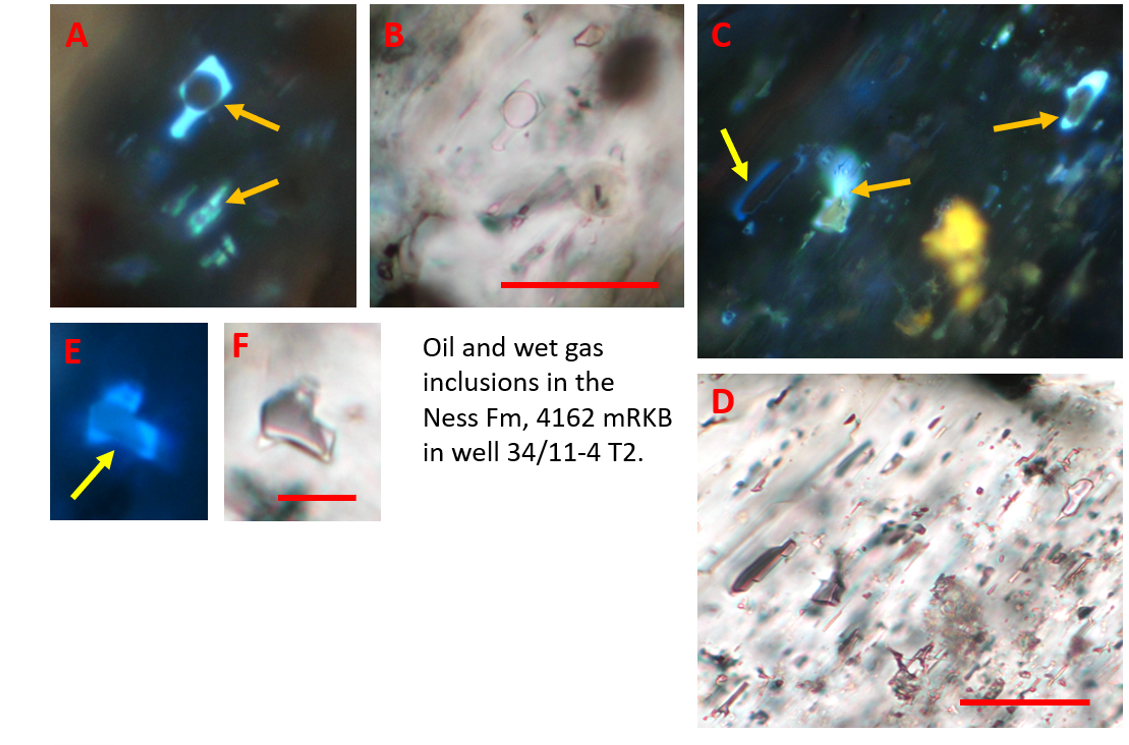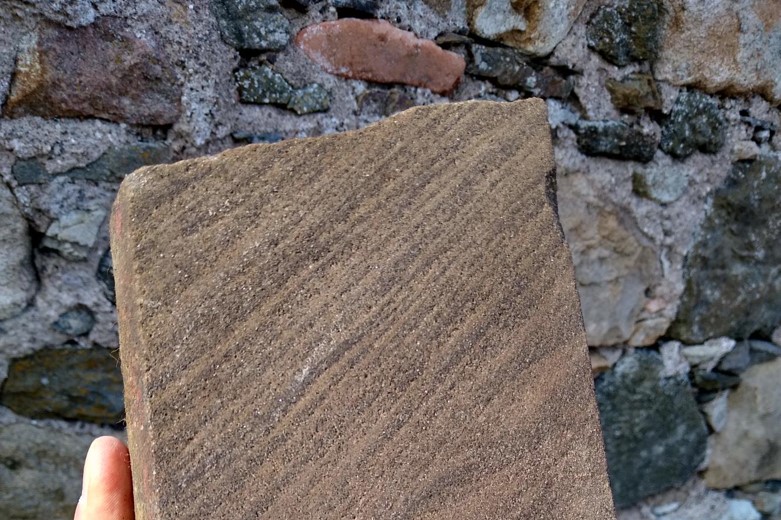A study performed by Olav Walderhaug from Equinor, the main outcomes of which he shared with GEO ExPro, shows that out of 50 reservoirs classified as wet gas accumulations, 47 of these contain oil inclusions in diagenetic cements. The inclusions typically occur in quartz overgrowths, in albitized feldspar and in various carbonate cements (Figure 1).
Because of the very strong correlation between wet gas and oil inclusions in diagenetic cements, Walderhaug postulates that there is a strong indication that almost all wet gas accumulations in the North Sea used to be oil accumulations initially.
See also: Oil inclusions reveal new insights on timing of North Sea hydrocarbon generation.
The observation that wet gas accumulations almost solely reside in previously oil-filled reservoirs very strongly indicates that wet gas does not usually arrive in a reservoir as a wet gas phase. In contrast, the data suggest that wet gas in most cases forms in the reservoir as dry gas displaces oil. The dry gas evolves to wet gas because the dry gas picks up heavier components from the oil it displaces.

Only in the few cases where oil inclusions are absent, data indicate that wet gas is the first hydrocarbon phase to enter a trap. In these rare cases, the wet gas may possibly have remigrated from a deeper trap where dry gas displaced oil.
This further implies that expulsion of wet gas from source rocks, for instance by heating oil-generating source rocks to temperatures above the temperatures of the oil window, is of very limited or no importance for wet gas formation in the North Sea and probably also in other basins.
Wet Gas Inclusions
In eleven of the 50 studied wet gas reservoirs, the diagenetic cements also contain wet gas inclusions in addition to oil inclusions (Figure 2). Unlike dry gas inclusions that consist of little else than methane and therefore do not fluoresce, wet gas inclusions have a distinct blue fluorescence. Also, when viewed at room temperature, wet gas inclusions contain very large gas bubbles that fill most of the inclusion volumes, unlike oil inclusions where the gas phase at room temperature is much smaller than the oil phase. These characteristics enable rapid visual identification of wet gas inclusions.

In the examined North Sea reservoirs containing wet gas inclusions, they are found within both dust rims on quartz grains and in albitized plagioclase. This is a clear indication that gas must have displaced oil at moderate temperatures in most cases. The reasoning behind this is that albitization takes place at ca. 90°C and formation of quartz overgrowths typically starts at 70 – 80°C.
An Older Source Rock?
This subsequently raises interesting questions regarding the source of the dry gas that displaced the oil in these reservoirs, according to Walderhaug. In several of the examined wet gas reservoirs, temperatures of around 90°C were already reached in Cretaceous times. Source rocks such as the Draupne Formation were not very hot at that moment and were therefore not expected to be producing large volumes of gas. On that basis, Walderhaug suggests that this could be an indication of the presence of a deeper pre-Jurassic source rock that expelled large volumes of dry gas.
NEW THINKING ON GAS GENERATION
Professor emeritus at University of Stavanger Per Arne Bjørkum, a former Equinor employee, has presented a model for generation of thermal methane in sedimentary that challenges today’s model which assumes that most reservoir methane is generated from thermal cracking of oil. The manuscript is available here.
Bjørkum argues that thermal methane is generated from alkylated aromatics in the organic matter dispersed in mudstones, implying that all sedimentary basins generate methane. Most of the methane is dissolved in pore water, but Bjørkum also presents a flow model that explains how methane can accumulate in shallow reservoirs by fluids ascending rapidly though hydraulic fractures in deeply buried and highly overpressured rocks. Globally, only some 1% of the methane ends up in conventional gas reservoirs. However, under optimal geological settings, a significant fraction of the dissolved methane might end up as free gas.
Bjørkum emphasises that although the new model for generation of methane departs significantly from today’s model, he has not had to invent a new mechanism for generation of methane nor how methane might be transported in sedimentary basins along with and dissolved in water. The new model is merely a quantitative synthesis that also explains the total amount of methane present in sedimentary basins which today’s models ignore.




